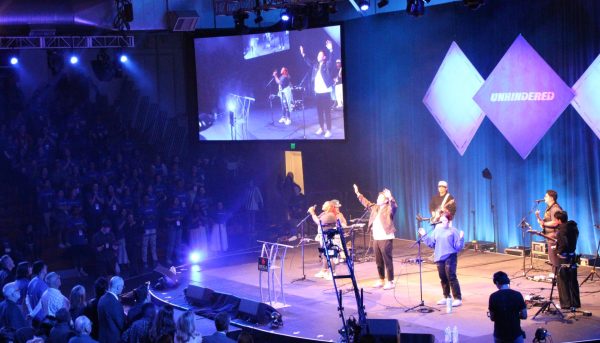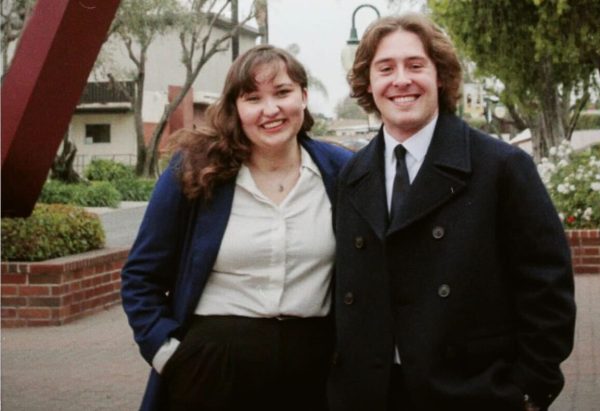Myanmar’s junta stalls UN envoy another day
stranglehold around Yangon appears to ease
Nepalese Buddhist monks hold placards as they protest against the Myanmar military government in Katmandu, Nepal, Monday, Oct. 1, 2007.
October 1, 2007
Myanmar’s junta leader stalled a U.N. envoy for yet another day Monday, delaying his chance to present international demands for an end to the crackdown on the largest protests in two decades.
A Norway-based dissident news organization estimated that 138 people were killed — more than 10 times the government figure — and 6,000 detained.
After days of intimidation that snuffed out the public demonstrations led by Buddhist monks, soldiers and riot police redeployed from Yangon’s center to the outskirts Monday, but were still checking cars and buses, and monitoring the city by helicopter.
Traffic was light and most shops remained closed. Some monks were allowed to leave monasteries to collect food donations, watched by soldiers lounging under trees.
Ibrahim Gambari, the U.N.’s special envoy to Myanmar, was given an appointment to meet with Senior Gen. Than Shwe on Tuesday in the junta’s remote bunker-like capital, Naypyitaw, an Asian diplomat said.
Instead of the meeting Monday that he had hoped for, Gambari was taken on a government-sponsored trip to attend a seminar in the far northern Shan state on EU relations with Southeast Asia, said other diplomats. The diplomats spoke on condition of anonymity, citing protocol.
Public anger, which ignited Aug. 19 after the government increased fuel prices, turned into mass protests against 45 years of military dictatorship when Buddhist monks joined in. Soldiers responded last week by opening fire on unarmed demonstrators, killing at least 10 people by the government’s account.
”The people are angry but afraid _ many are poor and struggling in life so they don’t join the protests anymore,” Thet, a 30-year-old university graduate who is now driving a taxi, said Monday.
A Norway-based dissident news organization, the Democratic Voice of Burma, said pro-democracy activists estimate 138 people were killed.
”Our own estimate is about 6,000 people detained, not killed, but detained,” including about 2,400 monks, DVB chief editor Aye Chan Naing said in Oslo.
He said they are being held in at least four places _ the infamous Insein Prison, a pharmaceutical factory, a technical institute and a disused race course.
He said his reporters had spoken to one family whose son was wounded by gunfire in Yangon, brought to a hospital on Sept. 28 and disappeared on Sept. 30.
There was a clear sense that the pro-democracy protests had once again failed in the face of the junta’s overwhelming military might, which was last used in 1988 to crush a much larger uprising.
”I think the protests are over because there is no hope pressing them,” said a 68-year-old teacher.
In Yangon, trucks full of police and soldiers arrived in the afternoon. Small vendors immediately packed up and left, while other stores hurriedly closed their windows, fearing trouble.
Shwedagon and Sule pagodas, two flash points of the unrest, reopened, but there were few visitors.
Another Asian diplomat said Monday all the arrested monks were defrocked _ stripped of their highly revered status and made to wear civilian clothes. Some of them are likely to face long jail terms, the diplomat said, also on condition of anonymity.
In Mandalay, Myanmar’s second largest city, security forces arrested dozens of university students who staged a street protest on Sunday, a witness said.
Gambari is expected to return to Yangon on Tuesday to catch a flight out of the country, the diplomats said.
The U.N. said Gambari, in the country since Saturday, ”remains in Myanmar. He looks forward to meeting Senior General Than Shwe and other relevant interlocutors before the conclusion of his mission.”
The White House said Gambari should be allowed to meet with the junta leader and said the waning protests were no surprise.
”When individuals who are out peacefully protesting see their friends and colleagues — and journalists, in fact — being brutalized, then that can have a chilling effect on any type of protest,” said press secretary Dana Perino.
The junta has not commented on Gambari’s mission. Since arriving on Saturday, he has met with junior members of the junta in Naypyitaw and pro-democracy leader Aung San Suu Kyi in Yangon.
Gambari’s hour-long talk with Suu Kyi was unexpected — he did not know before he arrived if he would be allowed to meet the 1991 Nobel Peace prize winner who has come to symbolize the struggle for democracy in Myanmar. She has spent nearly 12 of the last 18 years under house arrest.
Suu Kyi’ National League for Democracy party was not optimistic Gambari would yield any influence over the junta leaders.
The junta has never responded well to international pressure in the past and has rebuffed U.N. efforts to bring about reconciliation with Suu Kyi.
But its desire for oil and gas investment, increased tourism and its status as a member of the Association of Southeast Asian Nations means it cannot follow a completely isolated path, as it has in the past.
”I do think a number of underlying dynamics have changed quite fundamentally and make us more hopeful that something might happen,” said British Ambassador Mark Canning.
The military rulers have sought to limit news coming out of Myanmar, with public Internet access restricted and mobile phone service sporadic for a fourth day in a row. Soldiers have gone to hotels in search of foreign journalists operating without permission.
For more on the country of Myanmar (Burma): https://www.cia.gov/library/publications/the-world-factbook/geos/bm.html







